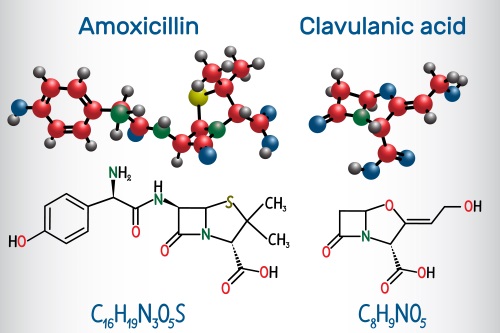
Quality of veterinary oral formulations of amoxicillin/clavulanic acid in World Small Animal Veterinary Association (WSAVA) member countries
The RVC team is researching the deficits of a selected antimicrobial drug, following more general concerns about substandard or falsified veterinary medicines being sold in some settings.

Challenge
The World Small Animal Veterinary Association’s Therapeutics Guidelines Group (TGG) published the Essential Medicines List (TGG 2020) but a subsequent question concerns drug quality in countries where these medicines could be purchased. Poor quality medicines, classified as Substandard or Falsified (SF), have deleterious health, economic and reputational impact. Lack of efficacy due to SF veterinary products may be life-threatening in the case of antimicrobials drugs or vaccines. Furthermore, SF antimicrobial products are likely to expose sick animals to sub therapeutic levels and contribute to treatment failure and antimicrobial resistance.
According to the WHO, the percentage of observed failure rate of analysed medical product samples from Low and Middle Income Countries was 10.5% (95% Confidence Interval 9.9 – 11.0) and 10.6% (10.3-10.9%), respectively (2017 WHO Study (PDF) on the public health and socio-economical impact of substandard and falsified medical products). When focussing on antibiotics only, the percentage of observed failure rate was 7.2% (95% CI 6.8 - 7.7).
In the last two years only, there has been three reporting of Falsified Augmentin (Haiti: Medical Product Alert N°11/2019, Uganda and Kenya: Medical Product Alert N°9/2019 and Cameroon: Medical Product Alert N° 2/2018). The prevalence studies for SF in veterinary medicine are rare (only 10 studies across 20 years, all in Africa) and their results are highly variable (antibiotics: failure between 11%-93%, four studies) and dependent on the study design (Pellicaan, Hilarius et al. 1996, Gberindyer, Onyeyili et al. 2014, Gberindyer, Olaogun et al. 2019).

Solution
The RVC research team decided to focus on a single active ingredient because of economic constraints. We selected an antimicrobial drug because deficits in the quality of these drugs have obvious negative consequences on patient care due to lack of clinical efficacy as well as potential implications for the selection of AMR due to underdosing.
We selected amoxicillin/clavulanic acid (AMC) as a surrogate drug since this β-lactam antibiotic is the most commonly used antimicrobial drug in companion animals worldwide. Moreover, both active ingredients (i.e. amoxicillin and clavulanic acid) are sensitive indicators, due to their limited stability. The team is focussing on tablet formulations only.
The objectives of the study are as follows:
- Detect types and frequency of deficits in the quality of veterinary oral formulations of AMC.
- Identify regional trends including differences between countries or between geographical areas within the same country.
The study follows the Medicine Quality Assessment Reporting Guidelines (MEDQUARG) as proposed (Newton, Lee et al. 2009). We propose to test a random sample of all medical products from nationally representative sample of outlets from 3-10 countries, located in three different OIE regions.
